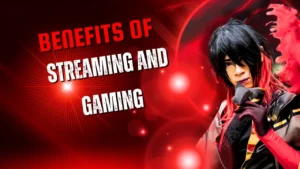One Piece Odyssey: From The Manga To The Video Game
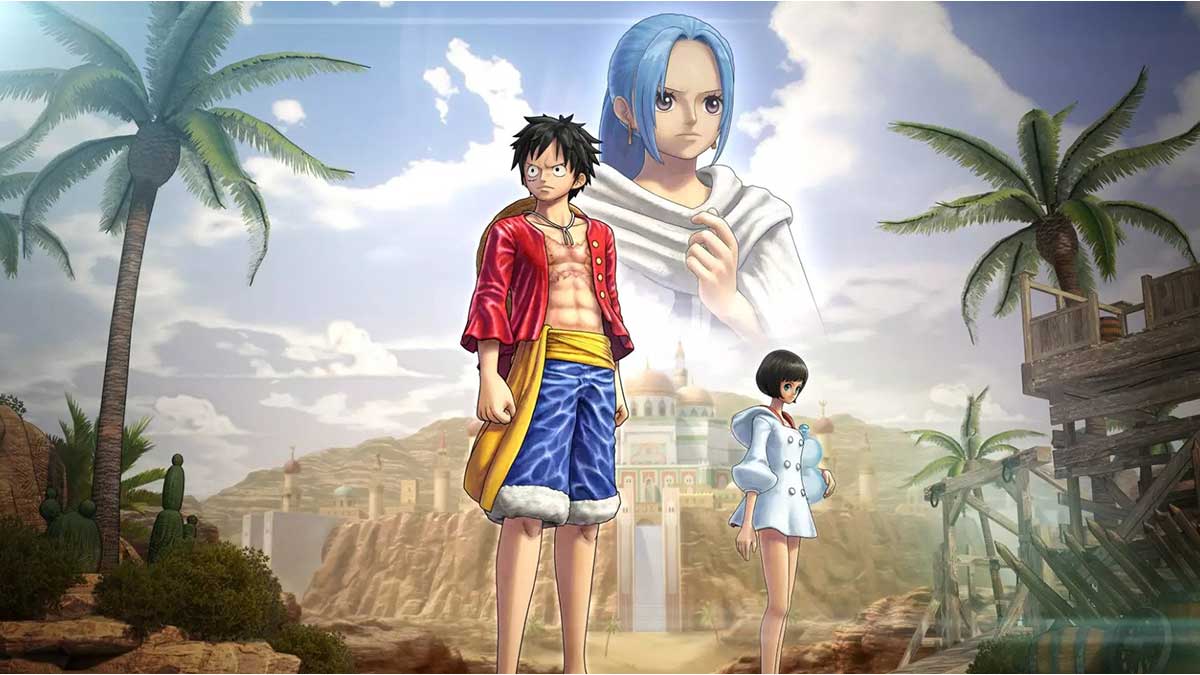
PlayStation 5, PlayStation 4, Xbox Series X
Bandai Namco brings us back to the world of One Piece with an interesting new classic RPG.
A month ago, we told you about our test of One Piece Odyssey, the new RPG created by ILCA and dedicated to one of the most famous manga and anime in the world. Our first impressions were more than positive, and now we’ve finally managed to get our hands on the full version of the game, which is due out on PC and old and new generation consoles on January 13th.
In many years of video games dedicated to One Piece, no one had ever thought of turning it into a real role-playing game, yet the complex setting and the many interesting characters that populate the manga created by Eiichiro Oda lend themselves wonderfully to this genre. ILCA had to arrive to seize the opportunity and create a JRPG dedicated to the work, created among other things to celebrate the 25th anniversary of the birth of the original series.
After playing One Piece Odyssey, we can anticipate that our initial impressions, namely that this was one of the best games dedicated to the work, turned out to be correct but, as you will discover by continuing to read, unfortunately not everything went as smoothly as it should have.
Adventure on Waford Island
The story of One Piece Odyssey revolves around a new unpublished island, Waford, created specifically for this video game. The island is very atypical and full of mysteries to be revealed, which manage to tie in an interesting way to the narrative background of the original manga, calling into question the islands of the sky and, above all, Weatheria. Let’s make it clear right away that the title is primarily intended for One Piece fans, given that there are so many references and dialogues that are understandable only to those who know the source material.
Even the revisited sagas taken from the manga, such as Alabasta or Water 7, are based precisely on the fact that the characters have already experienced those stories and often comment on them, noting the differences with the original events. ILCA has therefore mainly focused on making a game for the fans and this can also be seen from numerous details (Sanji, for example, cannot hit women in combat, as befits his character), not to mention the many references to figures and other events well present in the memory of fans.
At the center of the story, we find two original characters created especially for Odyssey: Lim and Adio. Lim is the cause our heroes will have to start over at level 1, as the mysterious girl has the power to steal the abilities of anyone she touches, turning them into special cubes that can also store memories. This will be the element that will kick off the events of the game: Luffy and her crew will have to visit worlds created from their memories to regain the abilities extracted from Lim.
Adio is instead an adventurer endowed with the power of the Devil Fruit Grab Grab, thanks to which he is able to block and grab any inanimate thing and control it. This character will guide us through the ruins of Waford in search of the Colossi, four elemental constructs that hold the main memories of the crew prisoner: to free them, our people will have to defeat them. Obviously, the whole story of the game is focused on discovering the many mysteries surrounding Lim, Adio and the island of Waford, interspersed with journeys in the alternative versions of some of the most important sagas seen in the original work.
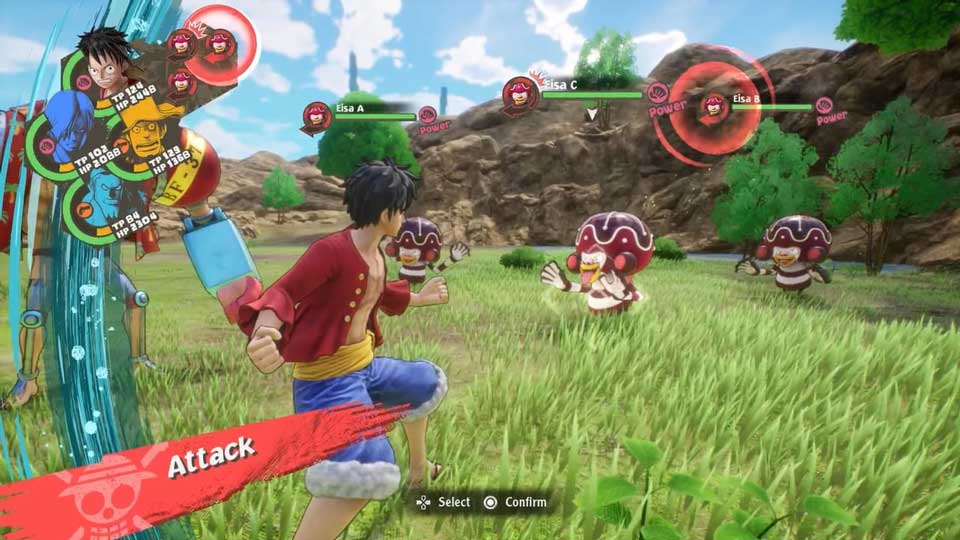
Precisely these parts, which should be the most interesting for a fan of Eiichiro Oda’s work, are however not very successful, because they suffer from direct comparison with the original sagas. Right from the start we are told that the world of memory does not perfectly reproduce real events, because memories are fleeting, they fade and change over time, an excellent excuse to offer something new and interesting. But what One Piece Odyssey (you can already find it on Amazon) does is propose a watered down and summarized version of the great sagas seen in the manga.
Even Marineford, the one heralded by the trailers as the most interesting in the game due to the presence of the whole crew (and not just Luffy as in the original story), is made with the least possible effort. It all ends in a series of clashes one in a row and without major changes at the narrative level.
One thing that we missed a lot, then, is the presence of the classic final clashes between the crew and their nemeses, usually consisting of epic duels – an aspect that represents one of the strengths of the manga. Here these clashes are completely absent, also due to the combat system which does not lend itself well to one-on-one fights. It’s not a big flaw, given the nature of the game, but it’s sad to see how we didn’t try to find an alternative formula and preferred to cut almost all of them, leaving only the “final bosses” and little else.
Ultimately, the story of One Piece Odyssey, to be built entirely on a fanservice responsive concept, also works quite well, if you turn a blind eye to some small and inevitable inconsistencies related to the realms of memory. The main problem is that the narration of the most famous sagas of the manga and anime do not hold a candle to the original work, and the unpublished events related to Waford and his characters do not go beyond the quality of the typical filler episodes of the ‘anime.
As far as the plot is concerned, therefore, it is clearly seen that the game did not have a budget up to the development team’s ambitions, which could have created something more complex and well-finished with a little more money, but in the end it didn’t we feel like rejecting their work, given that the adventure lived alongside Luffy’s crew is quite enjoyable, net of the defects listed. Especially since finally all the crew members are protagonists and the title manages to convey the sense of cohesion of the entire crew well.
Very unique turn-based combat
As we had already had the opportunity to notice during our preview, the One Piece Odyssey combat system takes full advantage of the classic turn-based JRPGs, however proposing some interesting variants. At the base of everything there is a paper, rock, scissors system, which in this case consist of the types of characters, divided into Power, Speed and Technique. In fact, it will be essential to be able to choose the right character with which to attack the enemy; for example, it doesn’t matter that Luffy (Power character) has twice the attack value of Nami (Speed character), because against a Technique-type enemy he will always do less damage than Nami and will suffer much more.
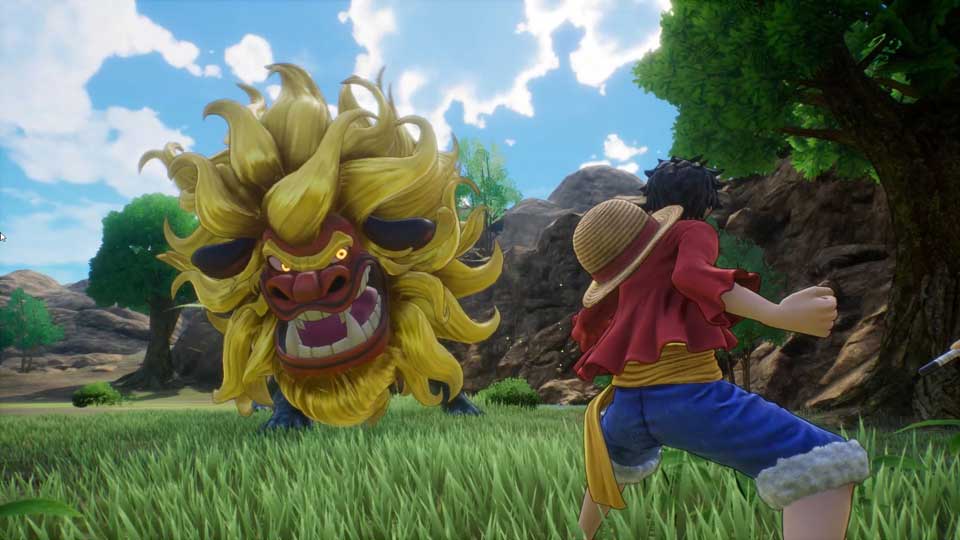
It will not always be possible to have the characters of the right type available against the enemies you face, also because often these will arrive in very varied groups: in this case there will then be other weaknesses to exploit, such as the elemental ones or those linked to statuses, such as sleep, confusion or poisoning.
In any case, one of the strengths of the combat system is the possibility of exchanging a party member – consisting of a maximum of four characters – at any time without losing the turn, so as to have the most suitable fighter intervene at the right time.
To this is added the interesting area system into which the battlefield is divided. In fact, at each fight, our characters will find themselves in pairs or alone to face the group of enemies present in their area; no character will be able to help the companions positioned in the other areas until he has defeated the opponents in his own, unless he uses an attack capable of hitting areas different from the one in which he is located.
In One Piece Odyssey the attacks, in fact, are divided against one or more opponents in the same area or in other areas or, very rarely, are directed against all enemies present, regardless of their position (such as the Thunderbolt Tempo ability by Nami). Furthermore, sometimes, with very powerful blows, enemies can be thrown into areas other than their own, or even thrown towards other enemies, thus inflicting further damage.
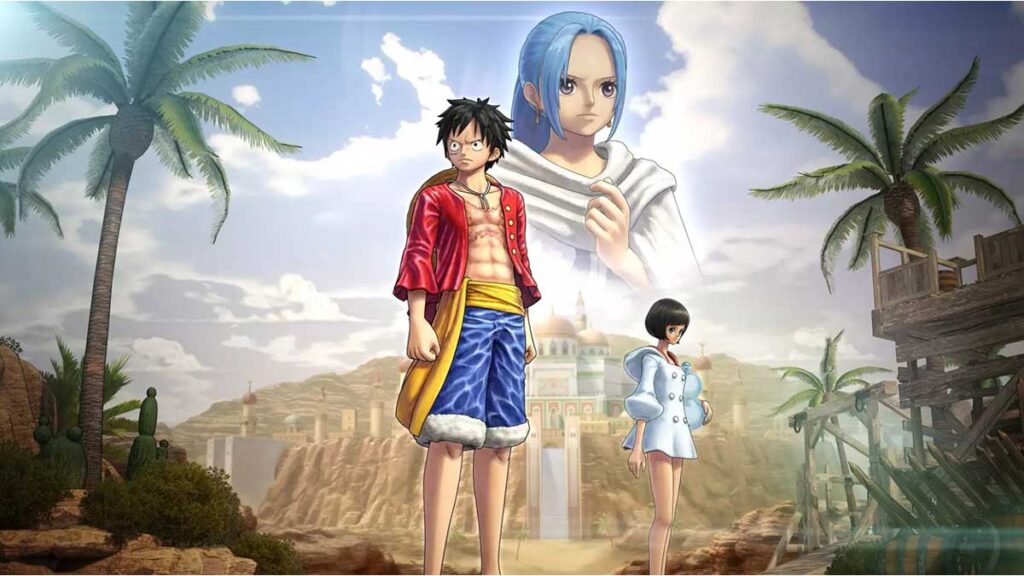
Once the first fights have been tackled, the system will become particularly intuitive and will offer interesting possibilities not normally present in other classic RPGs, allowing you to create strategies based on the positioning of your party and on the combination of more or less effective attacks and special moves based on the type of enemy.
Certain encounters have special conditions which, if met, will give you generous experience bonuses
Add modifiers to all of this; approaching an enemy from behind, for example, will guarantee us a high probability of successful critical hits in the first turn – which, however, will also be true in the opposite case, if the enemy were to take us by surprise – and often in battle events will also occur time (for example the defeat of an enemy with a certain character or before someone from our party goes KO): if the conditions are met, they will give us a big bonus to the experience points earned.
We have noticed that the development of our characters is quite guided: in fact, in some points of the game enormous amounts of experience points are earned with simple random encounters, which however happens less and less often as the levels progress. An intelligent method that limits wild farming, so as to prevent characters from becoming too powerful from the early stages.
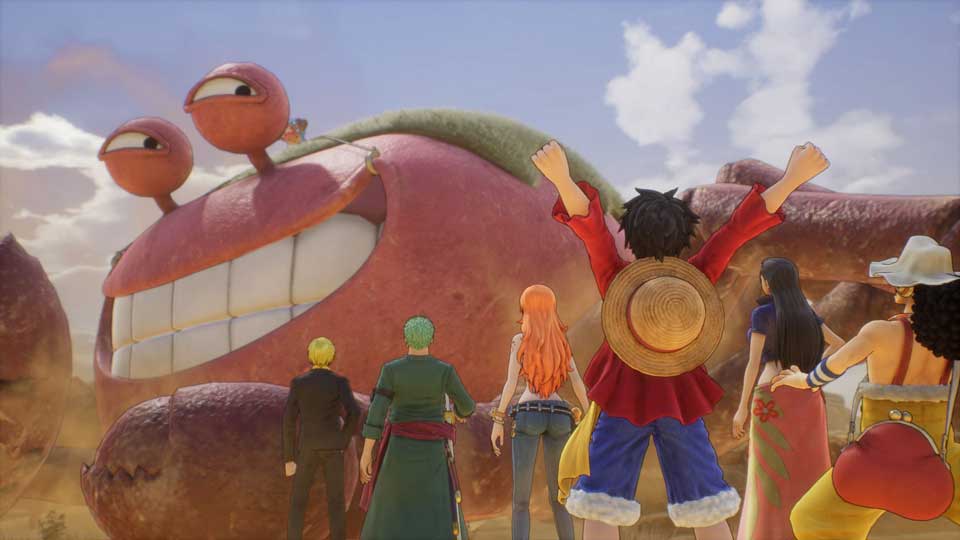
In battle we will have a total of four commands: Attack, Objects, Skills and Bonding Arts. The first two are self-explanatory, the Abilities instead will be the set of special moves of each character, while the Bond Arts are combined moves between three or four very powerful characters, but based on an additional bar that will be loaded by completing different actions, such as defeating enemies, healing allies or helping them with a character located in another area.
These moves are very spectacular to see and it will be good to keep them aside for the toughest bosses. Each character will then have a special move linked to the Bond Arts, which will consume only one point of the bar (out of a maximum of ten) allowing him to move to another area and attack even when surrounded by enemies.
The power of a pirate
The One Piece Odyssey combat system is also closely linked to the crafting of the game. For this there will be three different systems relating to as many characters: the kitchen for Sanji, the Tricky Balls for Usopp and the accessories for Nico Robin. Commanding objects in battle will be essential to heal and apply buffs and debuffs to your characters and enemies, given that the only member of the crew capable of restoring health and passing negative statuses is Chopper. Sanji’s kitchen will allow you to create dishes that can heal and give boosts to our party: these dishes will be much more effective than the simple items that can be purchased in shops.
Usopp, on the other hand, will create special balls to be thrown called Tricky Balls, which will serve to inflict penalties on enemies, including negative statuses such as paralysis and stunning, as well as the drop in attack and defense.
Finally, Nico Robin will be able to merge the accessories together to create more powerful ones. In fact, each character has a grid on which to place accessories of various geometric shapes: each of these accessories has a basic bonus to the various statistics; to have a single accessory with more bonuses, up to a maximum of four, you will need to fuse several. Furthermore, when more accessories are merged, it may happen randomly that Robin has the possibility of doubling the value of the statistic that is going to be merged. In this way it will be possible to create really powerful and lethal characters.
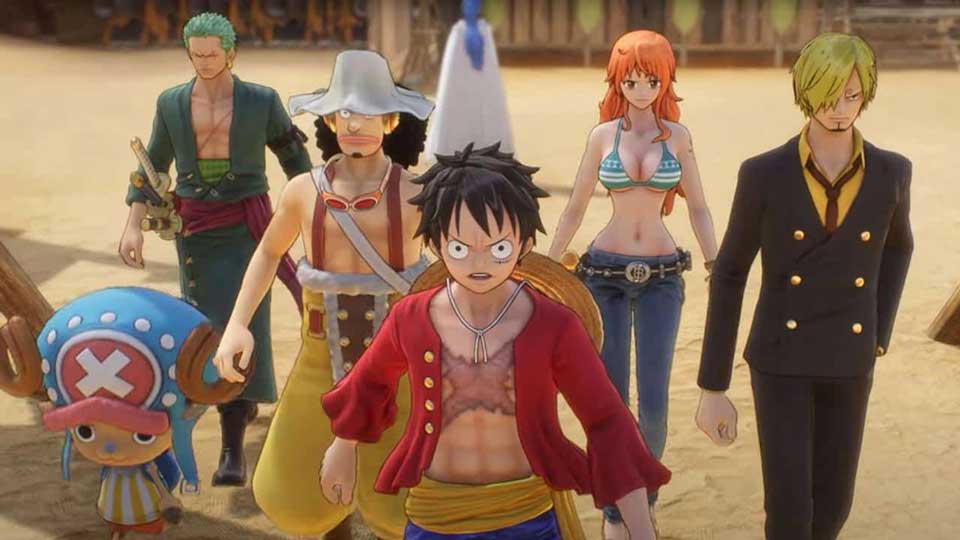
One Piece Odyssey is a pretty easy game; making good use of the systems described above, we have never had problems, even against the most difficult bosses in history (we limited ourselves to using buffs and debuffs against the latter).
Furthermore, if our team of four characters is totally defeated, the reserve ones will automatically enter the field, therefore game over will only be possible once all the characters at our disposal have been defeated (which has never happened to us). By blending the accessories well, it will also be possible to easily diversify the roles of the characters, creating tanks with high defense and life points, or destruction machines based on attack. Fortunately, for newbies there is also an option that automatically assigns accessories based on the directives selected, such as attack, defense and so on.
The characters are a pleasure to use, especially for the wide range of moves taken from the original manga, between Gear Second and Third, Sanji’s Diable Jambe, even Chopper’s Monster Point and so on. The developers were also good at making the characters very different from each other in the approach to battle: Zoro for example is able to apply bleeding with his sword attacks, while Sanji can stun and burn opponents, Nami is able to hit all enemies in the arena, and Usopp favors ranged and status-based attacks instead.
The only thing to always keep in mind will be the TP, i.e., the Voltage Points, which are consumed with each skill: partially reloadable only when starting a new fight, with normal attacks or with objects, but not when resting.
The developers then added a cunning element, knowing that going on in the game the clashes could have become boring to the players, by dint of always seeing the same films of the special moves: with the simple press of a button, it will be possible to fast forward everything the clash so as to speed up the times.
Gameplay-wise, One Piece Odyssey works very well, especially in combat. The clashes offer several strategic options, both in terms of character builds and on the battlefield. Too bad for the simplicity and the lack of a difficulty selector, which makes the level of challenge in general rather low, especially for those who are familiar with the genre.
Fortunately, there are more complex extra battles, to be tried towards the end of the main adventure for those who want to test their team and improve it further.
The scouting crews
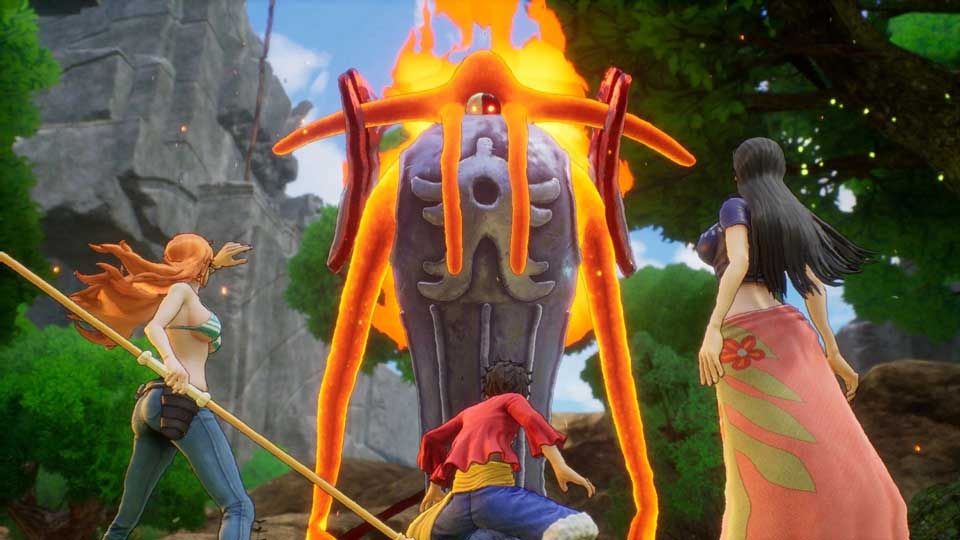
The structure of the various worlds that we are going to visit in One Piece Odyssey (if interested, you can find the game on Amazon) is just that of an old school RPG. We will basically have an alternation between dungeons to explore and cities where to rest and dialogue with NPCs, perhaps buying a few objects. The level design of the dungeons is not bad at all, each one tries to differentiate itself from the others with some unique element – usually environmental puzzles that are always different and also interesting to do. Nothing too complex or elaborate, but the variety, albeit not very original, is to be rewarded, given that it is difficult to get bored during explorations.
The special abilities of the characters also make the exploration of the areas less monotonous. Many of these are able to perform unique actions in the game world: Luffy, for example, will be able to hook up, thanks to his power of the Gom Gom Fruit, to various natural holds to cross ravines or vertically built areas; moreover, always taking advantage of his ability to stretch, he will be able to recover normally unreachable objects.
Zoro will instead be able to cut metal doors and crates, Chopper will be able to pass through the narrowest tunnels, while around the map Sanji will find unique ingredients and Nami some money. In short, no one within the crew will be useless and without a role even during exploration.
Obviously, as in any self-respecting RPG, in One Piece Odyssey there will be secondary missions, divided into three categories: the classic side-quests, the bounties and the missions to unlock the Bonding Arts. The former is nothing special, the classic secondary quests, very banal and without great creativity: sometimes we will have to defeat a certain number of enemies, others we will have to go from point A to point B to recover an object and so on. In short, in these quests you will not find flashes of unique design or noteworthy narrative cues.
Sizes are slightly more interesting. In the structure they are very simple: you go from the wanted (conveniently marked on the map) and you face him to collect the corresponding bounty. However, each of these battles is dialogued and, sometimes, there is also some interesting or ironic reference to the characters and the story of the manga.
Finally, the quests for the Bonding Arts are side missions that take place in a parallel memory world called Hysteria and which only involve characters who will learn that Bonding Art and then use it in combat. Also, in this case there will be no memorable stories, but the quests can be played, being rather short.
Water 7 is a pleasure to visit within the title
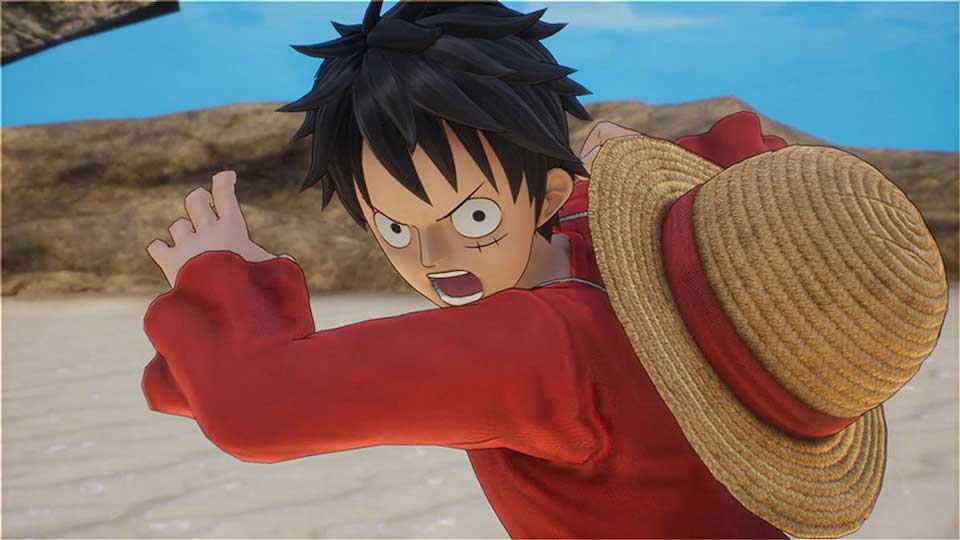
We appreciated the fact that secondary content usually only comes out after the conclusion of one of the sagas taken from the manga, so as not to break the rhythm of the main story. These contents are many, but not exaggerated. It took us almost 50 hours to complete the game doing a good 80% of this content and, probably, to finish the game 100% you will exceed this duration. The main story, on the other hand, should be completed in about 35, maximum 40 hours.
We also appreciated that in One Piece Odyssey backtracking is greatly reduced, thanks to several well-placed fast travel systems. However, there will be times in which it will be necessary to travel on empty without being able to teleport, especially in secondary missions, which during their development never indicate the objectives following the initial one, and will force you to rely on the clues given by the NPCs by moving a bit randomly in the maps.
On a graphic level, One Piece Odyssey does not make a miracle cry, but it is well done. The settings are beautiful to look at and some landscapes are also very suggestive. The character animations are convincing, especially in combat, when they show off their iconic moves. We only noticed some repetition of the NPC and enemy models, maybe just with a new color palette, but this is a classic of the genre.
On the other hand, we have hardly noticed any problems in terms of bugs or slowdowns: the only bug we found was in a couple of fights against the same enemy, where our characters refused to attack; fortunately restarting the game was enough to fix it.
On PlayStation 5, where we tested One Piece Odyssey, there is also the possibility of choosing between a quality mode and a performance mode: as usual, the first prefers greater graphic detail with 2160p at the price of a fixed 30 fps, while the second maintains everything always at 60 fps sacrificing a little detail, shooting only at 1080p.
In this case, since the game is not an action game with very fast action phases, it can be played easily even at 30 fps, not to mention that the differences compared to the performance mode are not huge.


